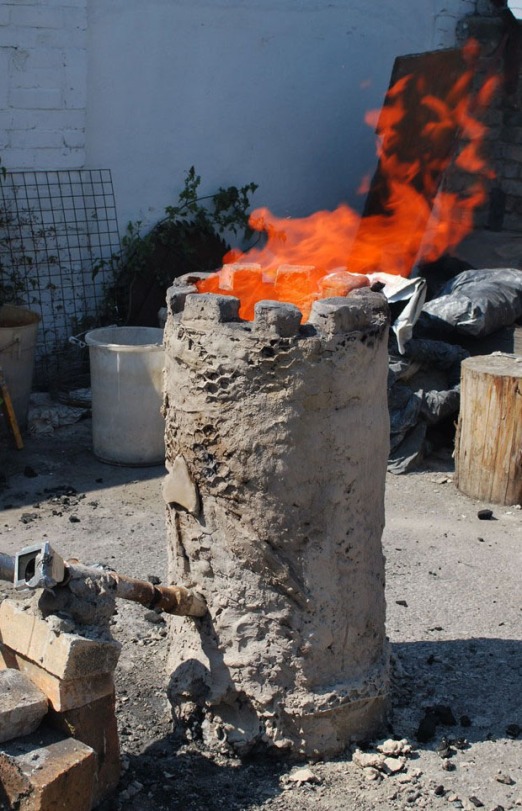Description
Iron smelting is the process of extracting iron from its ore and converting it into usable metal. This technology represents a significant advancement in human civilization, enabling the creation of stronger tools, weapons, and structures than those made from stone, copper, or bronze. This guide covers primitive iron smelting techniques that can be accomplished with technology available after mastering pottery making and mechanical weathering.

A clay bloomery furnace in full operation during the iron smelting process
Practical Guide to Iron Smelting
1. Understanding Iron Ore
Before attempting to smelt iron, you must be able to identify and collect appropriate ores:
- Hematite: A reddish-black mineral with a rust-red streak when scratched
- Magnetite: A black mineral that is magnetic (attracts to lodestone)
- Limonite: A yellowish-brown mineral often found in bogs and wetlands
- Siderite: A brownish mineral that often occurs with coal deposits
Test potential iron ore by crushing it to powder and heating a small amount on a charcoal fire. If it becomes magnetic after heating, it likely contains iron.
2. Building a Bloomery Furnace
A bloomery furnace is essentially a chimney-like structure made of clay:
- Mix clay with sand or crushed pottery (temper) at a 4:1 ratio
- Build a cylindrical structure about 1-1.5 meters tall and 30-40 cm in diameter
- Leave an opening at the bottom for air intake and slag removal
- Create a tuyere (air pipe) from clay or use a hollow reed protected with clay
- Allow the structure to dry thoroughly before use
3. Preparing the Ore
Raw ore must be processed before smelting:
- Crush the ore into small pieces using stone hammers
- Roast the crushed ore in an open fire to remove moisture and some impurities
- Further crush the roasted ore into a coarse powder
4. The Smelting Process
- Start a charcoal fire in the furnace and allow it to heat up
- Use bellows or blowpipes to increase the temperature to at least 1200°C
- Add alternating layers of charcoal and prepared ore (about 4:1 ratio of charcoal to ore)
- Continue adding fuel and ore while maintaining airflow for 4-6 hours
- The chemical reaction will separate iron from impurities, forming a spongy mass called a "bloom"

A freshly extracted iron bloom still glowing hot from the furnace
5. Extracting and Working the Bloom
- Break open the bottom of the furnace to extract the bloom
- While still hot, hammer the bloom to consolidate the iron and squeeze out slag
- Reheat and hammer repeatedly to create a more refined iron ingot
- The resulting iron can be further worked into tools and weapons
Troubleshooting Common Issues
Low Yield or No Bloom Formation
Cause: Insufficient temperature, poor ore quality, or incorrect charcoal-to-ore ratio
Solution: Improve airflow, use better quality ore, or adjust the ratio of materials
Furnace Collapse
Cause: Poorly constructed furnace or insufficient drying time
Solution: Add more temper to clay, ensure thorough drying, and reinforce with stones around the base
Brittle Iron
Cause: High carbon content or impurities
Solution: Reheat and hammer more thoroughly to work out impurities